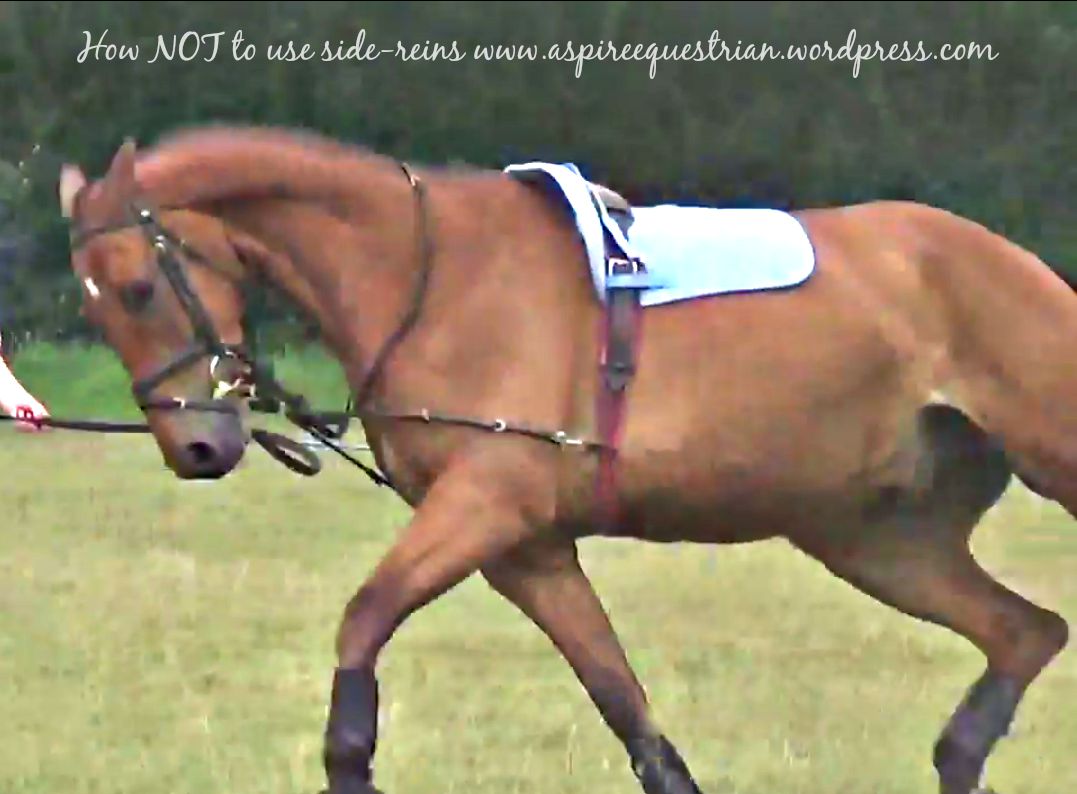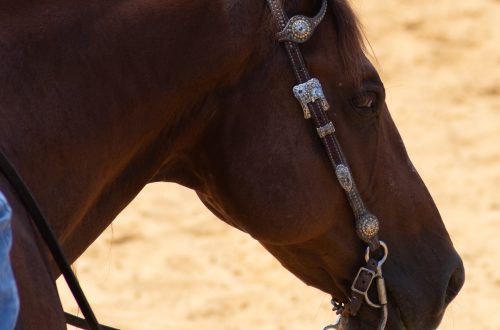
On the use of side reins (interchanges)
On the use of side reins (interchanges)
Side reins (decoupling) are used only when working on the lunge or on the reins from the ground. Under the saddle they can be used only in one case – when working on the lunge under the saddle. Side reins help us train the horse to accept the pressure of the reins.
Interchange types (from left to right): – with elastic inserts, with rubber rings, leather.
How to fix?
Decouplings are two reins with fasteners that allow them to snaffle rings, to a girth or edge. They should be used in conjunction with a regular snaffle, preferably with rings of a type that prevents the bit from being dragged into the horse’s mouth. Side reins can be combined with some types of bitless bridles, such as side pulls, but never with hackamores.
The junctions are adjusted so that both reins are the same length. Until the horse is warmed up, they can be loosened, the outside reins can even be unfastened. Then their position is adjusted depending on the level of training of the horse or the goals of the work.
Ideally, the side reins are attached to the girth or edge at a point equal to or above shoulder level.
Principle of operation
The principle behind the side reins is very simple: if the horse tries to put his nose out of the length allowed by the side reins, he will feel the pressure of the snaffle on his mouth and will feel it until he returns his head within the allowed range. The angle of pressure depends on the position of the horse’s head and how the reins are attached to the girth/edge.
Since most side reins have elastic inserts, they allow the horse to resist the pressure a little. Reins with elastic inserts have a “warning” effect, reins with rubber rings are less forgiving. Leather reins without inserts do not give the horse any “indulgences”.
Side reins teach the horse to accept the pressure of the reins and the presence of a snaffle, but they should only be used when the horse is already familiar with such pressure in principle, otherwise the horse, trying to resist, may damage his mouth and stop trusting the snaffle.
In the figure, we see three positions of the head and neck, “allowed” by the interchanges.
The ideal position is marked in black: the neck is extended, but with the preservation of the arch, the nose is slightly forward of the vertical. The reins are pulled correctly.
The red stance shows that the horse is walking ahead of the reins, probably with a sagging back. The snaffle presses on the toothless edge of the mouth (if the snaffle is articulated, then the arch also presses into the soft palate). If the horse holds this position despite the action of the reins, then the adjustments will not be felt by him.
The yellow stance shows that the horse is trying to stretch down the top line, but the side reins are pulling his head to his chest. The horse is rewarded when he pulls his head closer to his chest (pressure is relieved). So you run the risk of teaching her to leave for a reason.
When working a horse in crossroads, you should carefully monitor his mistakes and ask the horse to correct them. Interchanges should be used in short reprises.
The same length of the side reins provokes the horse to stretch on the outside along the path of the arc of the cord circle. This helps to prepare the horse for the upcoming inside leg on outside rein work. Reins should not be used to bend the horse – the horse’s body should be bent by its lunging trajectory. It is important to remember that the horse must maintain a curve through the entire body, from poll to tail. The benefit of the side reins here is that they limit the amount of “bow” in the horse’s neck.
The side reins should not be pulled so tight that they restrict the horse’s neck and prevent it from stretching – they should limit the horse’s nose, not allow it to be carried too far forward or to the side. They also should not be used on a horse that is too impulsive or overheated – they can severely damage the mouth of the horse that played up.
Properly adjusted reins will help maintain the correct frame and encourage the horse to move in a straight line during lunging under the saddle.
Risks when using side reins
1) Since the side reins do not allow the horse to carry his head naturally and do not allow him to stretch when the gaits are extended, they can cause the horse to stiffen the neck, which in turn will disturb the correct gait. For this reason, it is advisable to use the side reins only for work at a calm trot, and not at a walk and canter.
2) Side reins are often used to artificially force the horse to move in the required frame, but the result can be negative: the horse will simply put his head in a certain position, instead of working with his back. Too tight reins can provoke the horse to go on the front, teach him to “break” in the 3rd vertebra of the neck and work behind the reins.
3) Some horses will start to lean on the snaffle to keep it from disturbing the mouth (horses generally prefer constant contact to intermittent contact, as intermittent contact is uncomfortable).
4) If the side reins are not adjusted correctly (the inside rein is shorter than the outside), the front of the horse will fall into the center of the circle, the horse will be crooked.
5) Rubber rings add significant weight to the reins. Therefore, if the horse moves sluggishly, then the rings will beat him, in fact, “punishing” at the moment of giving in to the snaffle.
6) Side reins attached to the girth/edge will punish the horse for wanting to pull forward and down. As the horse stretches, its head will move down and inward towards the chest. Anyone who has ridden a horse that has learned to go off the reins knows that this habit is hard to change!
7) The horse gets more release when he goes ahead of the snaffle and lifts his head up, sinking in the back, getting used to moving far ahead of the vertical.
8) If you use interchanges for a long time, the horse can become entrenched, up to convulsions. A young horse needs five minutes of work with side reins The horse should never be released or left in the stall with side reins.
9) Attaching the side reins between the horse’s legs is an extremely dangerous method, as the horse can easily step between them with his foot when he reaches down. Downward pressure on the snaffle causes the bit to injure the horse’s mouth. The side reins must not be used in this way.
Karen Nelson (source); translation by Valeria Smirnova.





